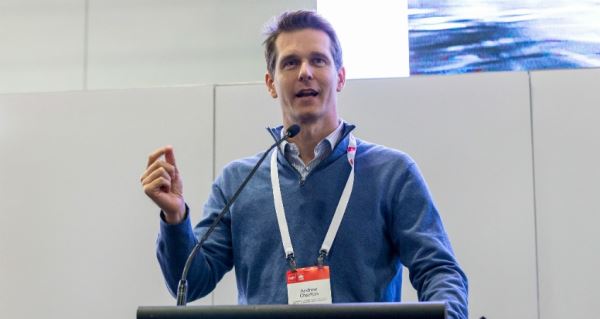Will robots eventually take trade jobs?
The short answer, according to Dr Andrew Charlton, economist and co-founder of strategic advisory consultancy AlphaBeta, is yes.
At a presentation at CeBIT Australia 2018, Dr Charlton shared his views on how automation is changing the Australian job market, and what the future of work looks like as more robots replace humans. Guess what? It’s not necessarily bad.
In the 1920s, there were about 26 million work horses in America, pulling carts, providing transportation and turning wheels.
From that peak in demand, the population of horses fell quickly within 30 years. Why?
Because they were replaced by cars and tractors. Technology made horses unemployed, and the biggest question on many minds are, are the same forces at play here? Are humans at risk of being replaced?
This fear of automation and robotics displacing workers is nothing new. Far from it, said Dr Charlton, who noted that the challenges of technological advancement were faced and addressed by world leaders throughout history, including President John F. Kennedy, and Queen Elizabeth 1.
“Research has shown that the rate of automation today is no higher than it was in the 50s and 60s, or in the 80s or 90s. But the industries impacted by automation have certainly changed,” he said.
Doing your job differently
Historically, machine-led job losses have been concentrated in highly physical industries such as agriculture and manufacturing. Today, white collar jobs are more at risk of being displaced than blue collar jobs, that doesn’t mean that the rate of displacement will accelerate or decelerate.
“(Automation) has always occurred, and it’s still occurring, albeit with different technologies and in a different form. It’s not just about job loss either. Much of it is about doing the job you already do, but differently,” he said.
“Automation is reducing the amount of time a worker will spend on routine tasks by up to two hours a week,” Dr Charlton said.
As machines, software applications and other technologies replace the physical, repetitive tasks in our jobs, people are able to do more of the tasks that require human understanding, such as teaching, creative thinking and decision-making.
For one, this makes our jobs safer. Manual tasks like the lifting, pulling and shifting of goods can now be done by machines, reducing the chances of workplace injury. Our work is also becoming more satisfying.
Improving job satisfaction
“The type of tasks that make our work meaningful are not the type of tasks that machines and technology are doing. Automating routine tasks will improve job satisfaction for 62% of low skill workers as it lets people do more of what they enjoy,” he said.
The same thing is happening with pay. Dr Charlton notes that the tasks employers value and pay highly for are not physical – they are creative, interpersonal and cognitive.
Hence, automating the physically-intensive, manual tasks will raise the value of human work on the whole, which means that worker salaries can only go up as their job roles change for the better.
The future of jobs is what we make it
Regarding the question as to whether robots will take our jobs, Dr Charlton said that it’s a matter of perspective.
“Rather than say machines will take our jobs, I think humans have been doing jobs that were meant for machines. Technology has enabled people to give back manual tasks to machines and be more human in our work,” he said.
His opinion is that automation could deliver a $2.2 trillion dividend to Australia, provided workers are transitioned successfully and the uptake of automation is accelerated throughout our industries.
“If you compare all of Australia’s publicly listed data to other parts of the world, you’ll find there are 50% fewer Australian firms engaged in automation compared to our countries. Currently, only 9% of our large companies are engaging in automation,” he said.
Dr Charlton’s final view is this: it’s up to businesses, governments and individuals to manage automation and advancing work technology towards a desired outcome.
Without the right policies and regulation to create the ideal world – where machines make our lives easier so humans can do what they’re supposed to do – it may not become reality.


